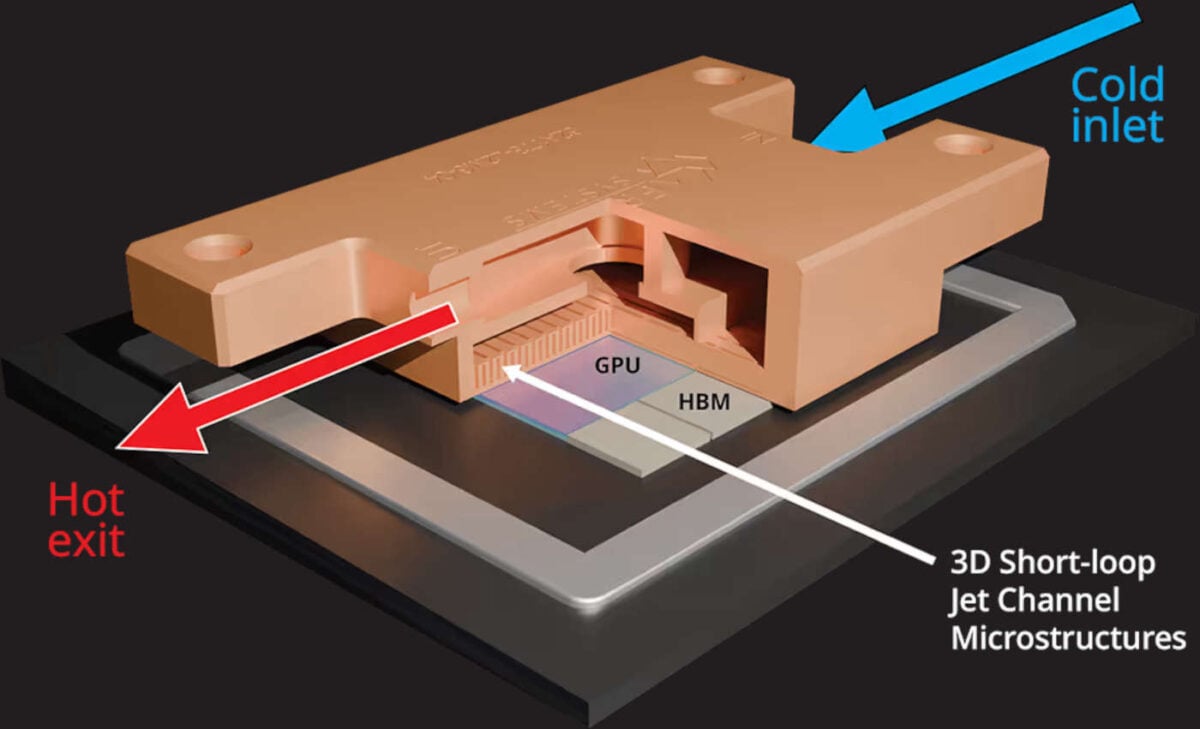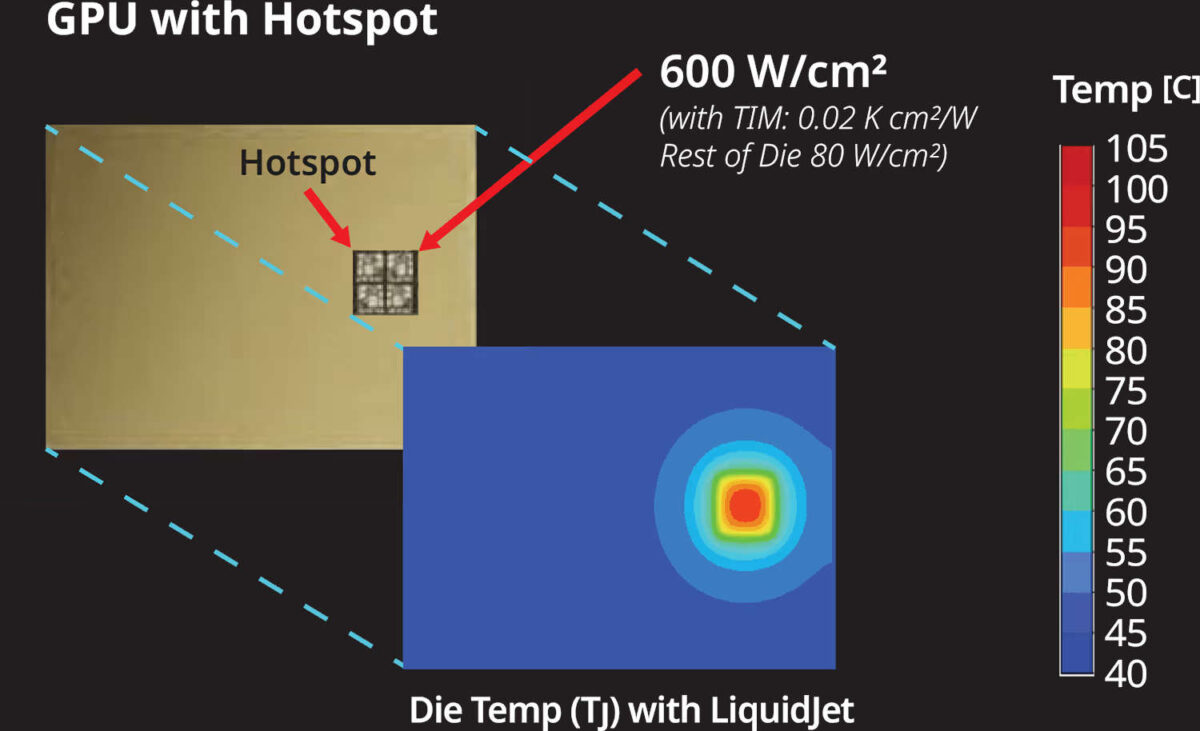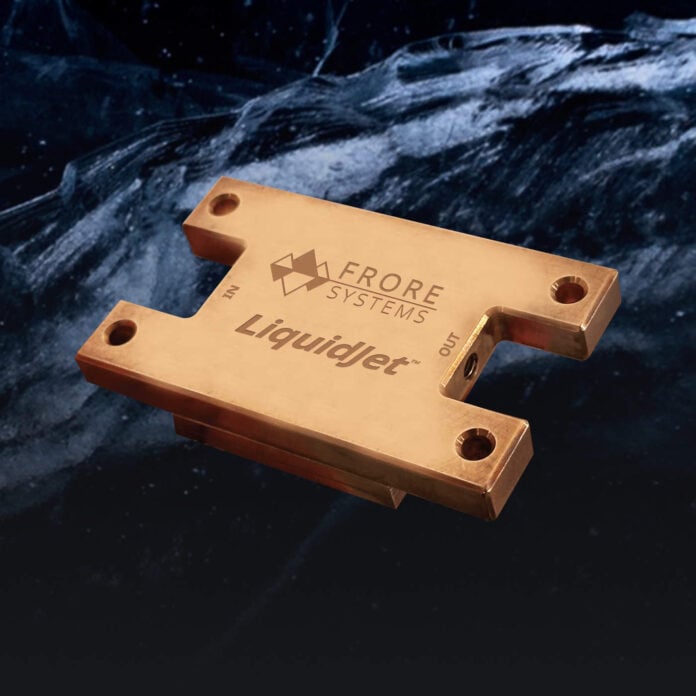Frore Systems has unveiled its LiquidJet direct-to-chip liquid cooling solution designed to meet the growing demands of AI data centres. This concept replaces the so-called traditional 2D microchannels with 3D short-loop jet-channels, which allow up to 600W/cm² hotspot cooling. The brand claims that its solution is engineered to scale with future multi-kilowatt chips, such as Nvidia’s Rubin and Feynman.
Known for its AirJet solid-state cooling devices, Frore Systems is today tackling a much bigger subject – high-power chip cooling. Seeing the growing power expectations of upcoming AI GPUs, the company began developing yet another new cooling solution, expected to handle up to 4,400W chips. It uses a redefined Direct-to-Chip Liquid Cooling (DLC) approach, said to be very effective at maintaining lower GPU junction temps, helping GPUs maintain a steady frequency while reducing thermal throttling.
Unlike current cold plates, which rely on skived 2D microchannel manufacturing, Frore Systems’ LiquidJet takes a different approach, fabricating 3D short-loop jet channels using semiconductor-style metal-wafer processing. This is said to provide an adapted cold plate that is better suited to the increasingly non-uniform high-power density requirements. To do so, Frore intends to customise its design to precisely match any SOC power map, focusing the cooling capacity where hot spots are located.

The LiquidJet is expected to unlock higher performance from existing GPUs, such as Nvidia Blackwell Ultra with its 1,400W thermal design, and upcoming Rubin, Rubin Ultra, and even Feynman architectures. Starting with the Blackwell Ultra GPUs, Frore notes impressive results, outperforming traditional cold plates on every major metric.
Frore advertises up to 600W/cm² hotspot cooling at a 40°C inlet, which is roughly twice higher hotspot power density versus traditional cold plates. But that’s not all, the LiquidJet also promises about 50% higher heat removal per flow (kW/lpm), and around four times lower pressure drop. The latter is an important part of the data centre’s total cost of ownership (TCO), as it reduces the need for stronger, more expensive pumping apparatus. Not bad for a drop-in upgrade.

“LiquidJet’s unique 3D architecture, with customised short-loop jet channel microstructures, sets a new bar for coldplate thermal performance,” said Seshu Madhavapeddy, CEO and Founder of Frore Systems. “Just as AirJet redefined active cooling for consumer and edge devices, LiquidJet transforms coldplates into a future-ready platform for the AI Factory.”
The company didn’t indicate any information regarding the cost of its solution, but from the looks of it, it’s unlikely to be higher than Microsoft’s silicon etched liquid channels. What is sure is that data centre GPUs will continue to ask for more power, requiring novel cooling solutions to stop them from overheating.


